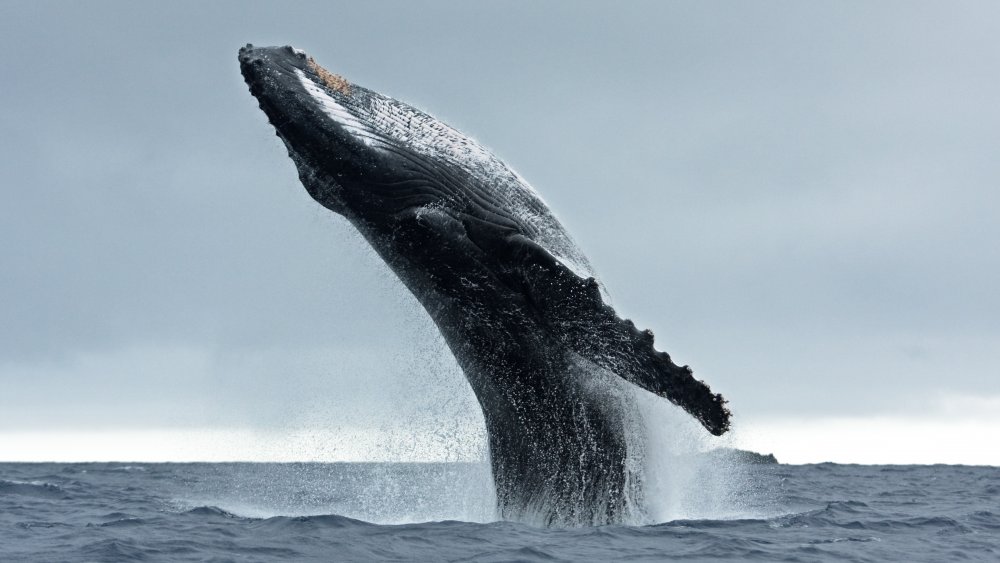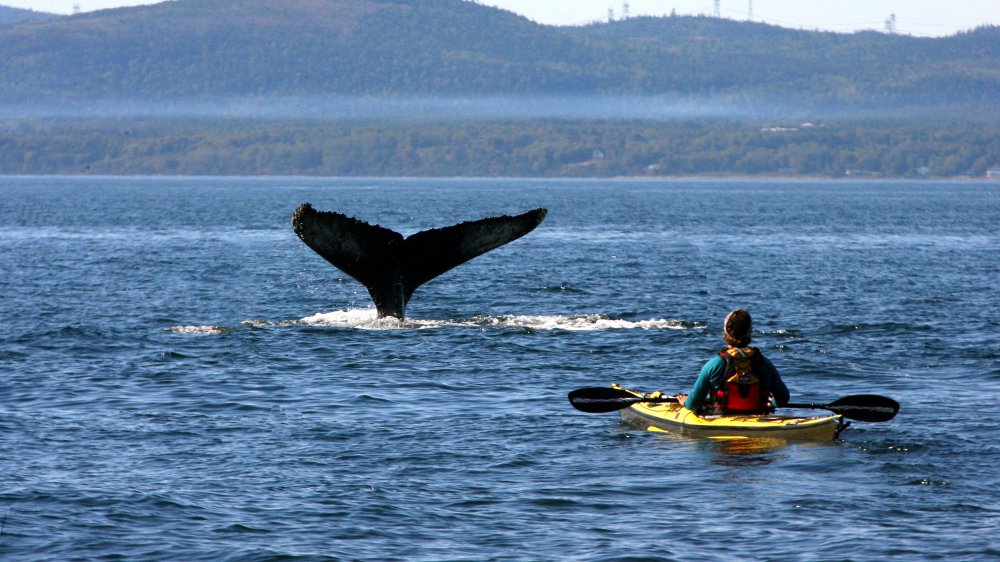The Dead Humpback Whale That Suddenly Appeared In The Amazon Rainforest
At the end of February, officials from the Brazilian state of Para's health, sanitation and environment department who were following a large congregation of scavenging birds stumbled upon the carcass of a humpback whale. While, despite its deceased state, the whale was normal, its location was not: deep in the mangrove swamps of the Amazon.
The CNN report of the occurrence noted that tides that season were rising twice their normal height, reaching 13 feet, so the body was carried in along with the usually trash. But while the creature was most probably hurled ashore during a storm, neither how it came so far inland nor why the whale was swimming along the Brazillian coastline was evident. Renata Emin, the leader of the project the conservation group Bicho D'agua Institute assigned to the case, explained to The Independent why the very presence of the whale was worth mentioning: "Along with this astonishing feat [of a whale being tossed so far inland], we are baffled as to what a humpback whale is doing on the north coast of Brazil during February because this is a very unusual occurrence."
The biggest obstacle, however, was actually removing the body for investigation. It took the initial team two trips to even reach it, meaning that using anything like a bulldozer or any other similarly sized machinery was implausible. Instead, they decided to wait for the corpse to decompose enough to dismantle the skeleton, which they then would transport to a museum in Belem for further study.
Humpbacks bucking trends
The more one reads recent reports about humpback whales, however, the more one realizes that in fact unusual behavior and numbers is their usual. This year, the National Oceanic and Atmospheric Administration discovered that throughout the latter half of the 2010s, humpback whales along the Atlantic coast have been experiencing an "Unusual Mortality Event" (UME). The NOAA defines a UME as "a stranding that is unexpected; involves a significant die-off of any marine mammal population; and demands immediate response." Essentially, more dead whales have been stranded than ever, prompting concern.
However, the New Scientist reported in 2017 — halfway through the UME — that off the coast of South Africa, the whales, which are generally solitary, were repeatedly seen in groups of up to 200 whales. This, though, is only part of the population surge, as ABC also reported an ever-increasing amount of whales off the coast of Queensland. The University of Queensland's Cetacean Ecology and Acoustics Laboratory counted about 25,000 whales, the largest amount in decades. This increase is not equally spread, a fact Associate Professor Michael Noad explained: "While our humpbacks are increasing 11 per cent a year, neighbouring populations like ones in the South Pacific — if they are increasing at all, they are much, much slower." Evidently, as unusual as a humpback whale appearing in the Amazon mangroves is, we have yet to reach the point where humpback whales fail to surprise us.

